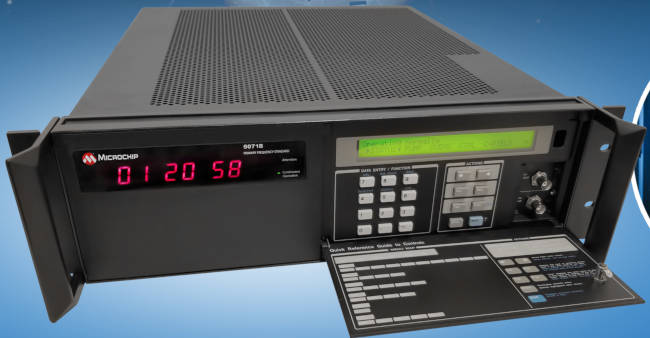
 At a glance
At a glance
Expert’s Rating
Pros
- Impressive processing power, especially GPU
- Port flexibility
- Enhanced HDMI with expanded display support
- Fan noise is very quiet
Cons
- Memory and SSD are not user upgradeable (and never will be)
Our Verdict
If it’s speed you need, the Mac Studio fits the bill. Apple’s primary offering for professionals is a complete package of processing power, features, and design.
Price When Reviewed
£1,999
Best Prices Today: Apple Mac Studio (M2 Max, 2023)

$1999
The Mac Studio had a splashy debut last year, a new desktop design with speed that filled the needs of the most demanding professionals. But it also raised a few questions at the time: Does it replace the Mac Pro? And if it doesn’t, will Apple continue the Mac Studio line once the Apple silicon Mac Pro arrives? Would the Mac Studio end up just like iMac Pro, a model that got little attention after its release and eventually was discontinued?
We now have answers that give the Mac lineup some much-needed clarity. Apple showed at WWDC that it is dedicated to upgrading and maintaining the high-end desktop Mac as a platform with the release of the M2 Max/Ultra Mac Studio and the M2 Ultra Mac Pro. The Mac Studio is Apple’s primary offering for customers looking for a high-performance Mac, while the Mac Pro addresses a niche that needs hardware expansion.
However, the M2 Pro Mac mini that Apple released back in January provides an interesting comparison with the M2 Max Mac Studio. Whether that Mac mini or the M2 Max Mac Studio is the Mac for you depends on the kind of work you do.
This review looks at the Mac Studio with an M2 Max chip, a 38-core GPU, 64GB of memory, and a 2TB SSD. It has several upgrades over the entry-level $1,999 M2 Max Mac Studio, which puts the price of our review unit at $3,199. Apple also sells a $3,999 Mac Studio with an M2 Ultra, 64GB of memory, and a 1TB SSD.
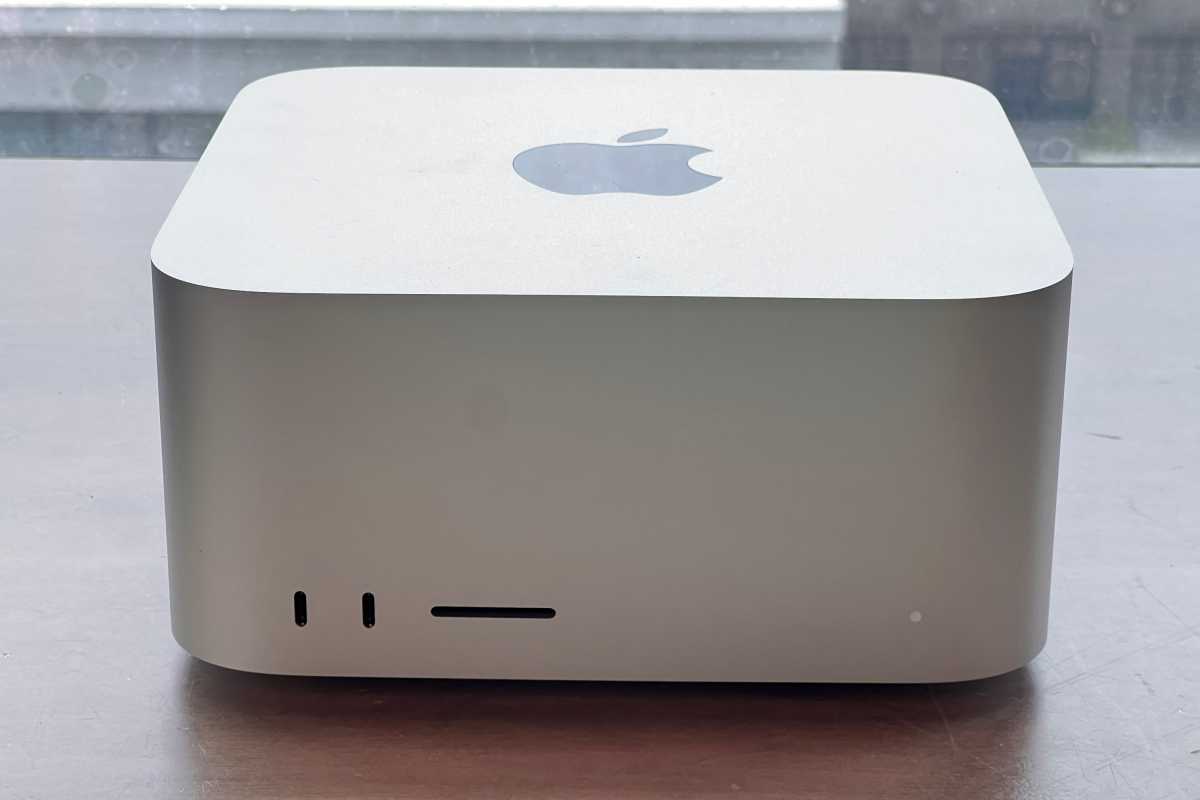
The Mac Studio is Apple’s Mac for high-end professionals but not the highest-end professionals.
Foundry
From M1 Max to the M2 Max
The Mac Studio debuted in March of last year with M1 Max and M1 Ultra models. The M1 chip series has had its time (there are only two Macs left with the entry-level M1 chip), and the M2 series is in full swing. The Mac Studio now comes with an M2 Max or M2 Ultra for the same price.
New chips mean, of course, boosted performance. The M2 Max has a 12-core CPU, which is split between eight performance cores and four efficiency cores. Its predecessor, the M1 Max, had two fewer efficiency cores (10 total CPU cores). Apple claims an improvement of up to 25 percent over the M1 Max.
We always start off our reviews with a look at general-purpose performance with the Geekbench benchmark. In our multi-core testing, the M2 Max was 18 percent faster than the M1 Max it replaces–not the 25 percent Apple claims, but Apple does hedge it by saying “up to 25 percent.” The M2 Max’s single-core result provides a 19 percent improvement.
A data point that sticks out is the multi-core result of the M2 Pro–this chip has the same 12-core CPU as the M2 Max. The M2 Pro that I tested in the 16-inch MacBook Pro is about 5 percent slower than the M2 Max Mac Studio, a difference you’ll barely notice, so it basically has the same CPU performance. The M2 Pro is a $300 option on the $1,299 Mac mini; if your work involves a lot of CPU processing and less graphics processing (which we’ll get to in a bit), the Mac mini can be a more affordable option over the Mac Studio.
We also ran Cinebench R23 to gauge CPU performance, and these are the results that matter most to buyers of the Mac Studio since Cinebench mainly uses 3D rendering and is a better performance gauge for creative professionals. We saw a 20 percent improvement of the M2 Max over the M1 Max–still not 25 percent, but closer.
We also again saw that the M2 Max Mac Studio and the M2 Pro Mac mini had the same performance. It’s important to reiterate here that even though Cinebench is a CPU-focused 3D rendering test and doesn’t rely on the chip’s GPU.
HandBrake is a video converter app that stresses the CPU or specialized video hardware, depending on how it is configured. In this test, we transcoded the 4K version of the royalty-free Tears of Steel video to H.265 using the CPU and the video encoders (the “VideoToolbox” framework version).
In the CPU encode test, the M2 Max blew by the M1 Max, improving performance by 32 percent. Our results also showed that the M2 Max has a slight edge over the M2 Pro, which is likely due to the amount of memory available. The Mac mini in our tests had 16GB of RAM, while the Mac Studio has 64GB.
The M2 Max’s boost over the M1 Max was a more modest 18 percent when using the video encoders. It also posted the same speed as the M2 Pro Mac mini.
With the Blackmagic Disk Speed Test, we saw a small 5 percent improvement in the M2 Max Mac Studio’s SSD over the M1 Max. That’s a noticeable difference when dealing with large files. The Read results are basically similar. The M2 Max Mac Studio’s SSD also posted moderate boosts over the M2 Pro Mac mini’s SSD.
The GPU gets a boost, too
The M2 Max in this review has a 38-core GPU, which is an upgrade from the 30-core GPU in the $1,999 Mac Studio. The 32-core GPU in the M1 Max Mac Studio that we reviewed last year was also an upgrade option. So in our GPU comparisons, we’re looking at the new 38-core GPU versus the old 32-core GPU.
The Geekbench 6 Compute benchmark tests the GPU performance using OpenCL or Metal APIs. Metal is developed by Apple and it’s the API the company wants developers to use to get the best performance. OpenCL is an open-standard API that’s more widely used because of its cross-compatibility.
With both the Metal and OpenCL benchmarks, the M2 Max’s 38-core GPU provides speed that is over 21 percent faster than the M1 Max’s 30-core GPU. The M1 Ultra is included in this testing for your reference–with either 48 or 64 GPU cores, it zooms past the M2 Max. The M2 Ultra is available with 60 or 76 GPU cores.
I made it a point to call out the M2 Max’s similar CPU performance against the M2 Pro, but here’s where the M2 Max Mac Studio separates itself from the M2 Pro Mac mini, which comes with either 16 or 19 GPU cores. If your work involves GPU processing, get a Mac Studio with as many GPU cores as you can afford.
Apple says it wants to bring more games to the Mac, and at WWDC, the company revealed some efforts to get more developers on board. It’s going to take some time before we can get some modern games to benchmark with, so in the meantime, we’re sticking to what we have: Tomb Raider and Civilization 6. The M2 Max Mac Studio posted some impressive framerates.
Resident Evil Village is a more recent game that features MetalFX Upscaling, which can boost graphics performance in software that uses Apple’s MetalFX API. It’s the type of graphics upscaling that AMD and Nvidia have done on the Windows PC.
To see it in action on the Mac Studio, I activated a Metal Performance HUD, which displays the frame rate. (You can do this in the Terminal by entering at the prompt defaults write -g MetalForceHudEnabled -bool yes and then hit Return. To turn it off, enter the same code in Terminal but replace yes with no.) I set the game display settings with the Prioritize Graphics preset and the screen resolution at 2560×1440. Then I ran the game twice.
The first time, I did not use MetalFX Upscaling and I had frame rates between 130 and 160 fps when moving around the game. The second time, I activated MetalFX Upscaling to the Quality setting, and the frame rates jumped up between 160 to 195 fps. What a sweet boost! Hopefully, Apple will do more to promote this technology to game developers so we can see the Mac gaming library grow and, more importantly, become more current.
Apple chips have video encoding engines, and we use iMovie to test them out. In our export tests, we didn’t see a difference between the M2 Max and the M1 Max, which isn’t that surprising since the engines between the two are very similar. The iMovie Stabilze test that we do puts pressure on the chip’s Neural Engine, and we see a 20 percent difference between the two chips.
The M2 Max has twice as many ProRes engines as the M2 Pro, which explains why it is so much faster in our tests.
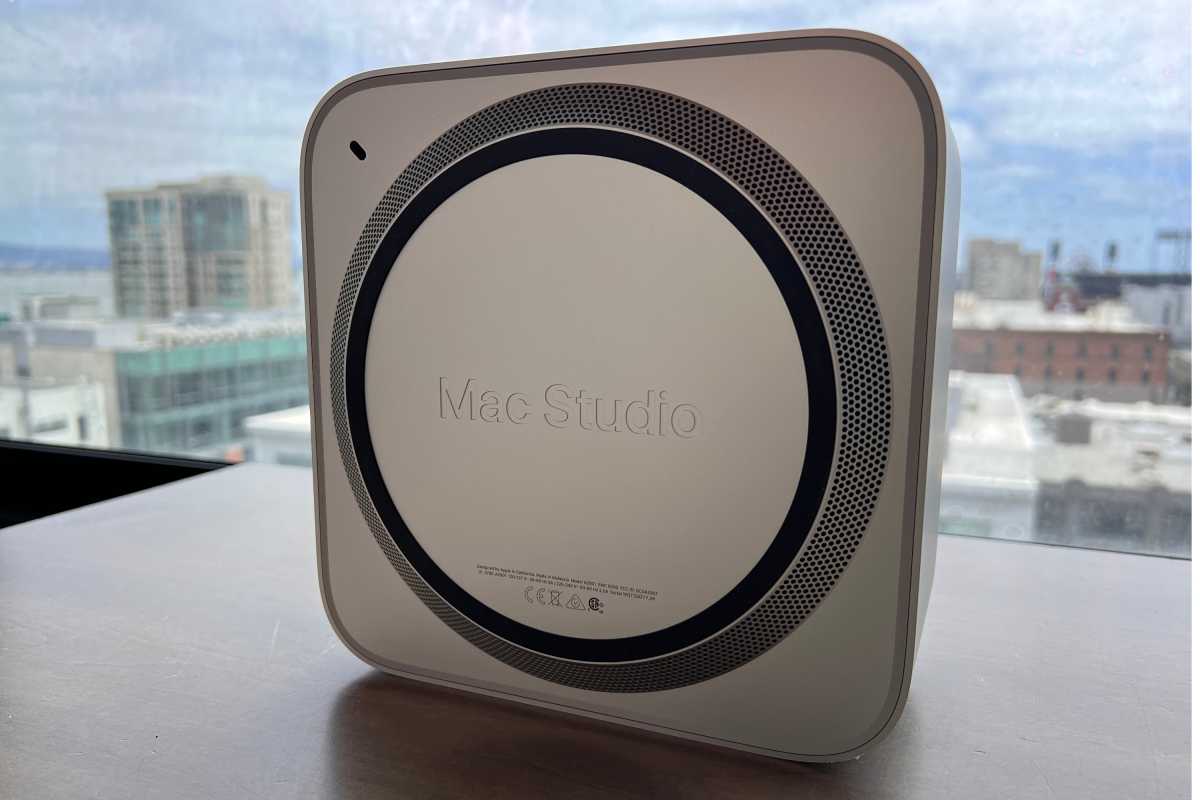
A ring of air vents is found underneath the Mac Studio.
Foundry
A big difference with display support
The main thing that’s new about the 2023 Mac Studio is the system on a chip–almost everything else is the same as last year. Apple didn’t introduce any design modifications or change the number of ports, though there are some upgrades. The headphone jack now has advanced support for high-impedance headphones and you get Wi-Fi 6E and Bluetooth 5.3 as with Apple’s other recent Macs.
However, there is a big change in the display support. The 2023 Mac Studio has an “enhanced HDMI” port instead of HDMI 2.0, and this enhanced HDMI implementation supports features in the HDMI 2.1 specification. This upgrade fixes the major flaw in the original Mac Studio: its HDMI port has a maximum resolution of 4K at 60Hz. Now, you can connect a display with 8K at 60Hz or 4K at 240Hz. And there’s support for variable refresh rate, HDR, and multichannel audio.
That’s not all! If you also use Thunderbolt, the M2 Max Mac Pro still supports four displays with 6K at 60Hz over Thunderbolt, and one display with 4K at 60Hz over HDMI. The new feature is that you can now connect two displays with 6K at 60Hz over Thunderbolt, and one display with 8K at 60Hz or 4K at up to 240Hz over HDMI. Did you get all that? Cool!
If you need to go hog wild with the displays, you’ll need to upgrade to the M2 Ultra Mac Studio. Since this is a review of the M2 Max Mac Studio, I’m not going to go over all the M2 Ultra display configurations. You can check out Apple’s website, but here’s a little teaser: you can connect up to eight 4K at 60Hz displays. Yowza!
You can read my review from, last year if you want a deep dive into the Mac Studio’s design, find out the details about the external ports, or get the nitty-gritty on Apple’s mouse, trackpad, and keyboard offerings. Here’s a quick bullet-point summary if you want the gist.
- The Mac Studio measures 7.7 inches square and is 3.7 inches tall. The M2 Max model is 5.7 pounds, while the M2 Ultra model is two pounds heavier because of the thermal system it needs.
- The back of the Mac Studio has four Thunderbolt 4 ports, a 10Gb ethernet port, two USB-A ports, enhanced HDMI, and a 3.5 mm headphone jack
- The front of the Mac Studio has either two USB-C ports (M2 Max model) or two Thunderbolt 4 ports (M2 Ultra model), and an SDXC Card slot
- The Mac Studio does not include a mouse, trackpad, or keyboard. You can provide your own but know that the Mac Studio works with the Magic Keyboard Touch ID and Numeric Keypad ($199). Touch ID is handy to have.
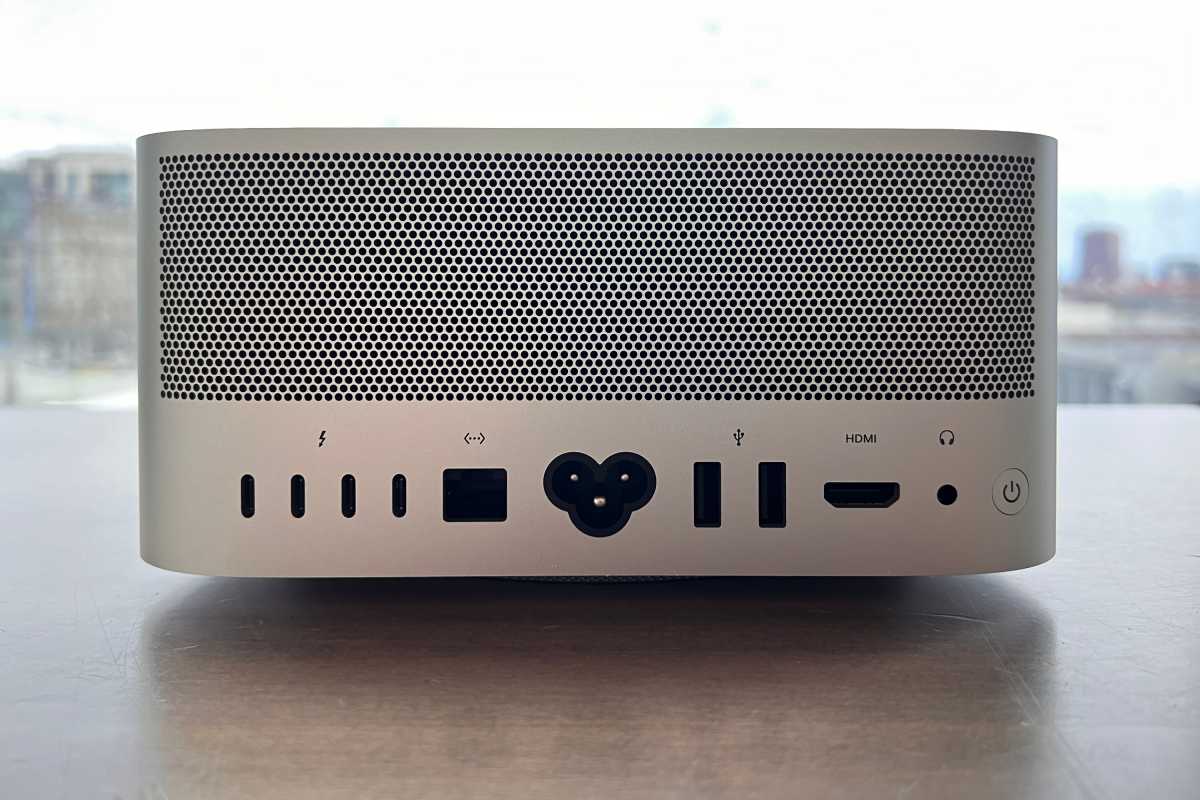
HDMI” port on the 2023 Mac Studio.
Foundry
Mac Studio or M2 Pro Mac mini?
As shown by our testing, the M2 Max Mac Studio and the M2 Pro Mac mini have similar CPU performance. That makes sense since both CPUs have 12 cores, split into 8 performance cores and 4 efficiency cores. With that being the case, if you know that the apps you work in the most are CPU dependent, the M2 Pro Mac mini could be a money-saving consideration–if you don’t customize it beyond the CPU upgrade.
To get the 12-core M2 Pro Mac Studio, customers take the $1,299 standard configuration 10-core M2 Pro Mac mini and upgrade the CPU. That brings the price up to $1,599 on a model with 16GB of memory. If you then decide to also upgrade to 32GB of memory, the price is $1,999–the same price as a base model M2 Max Mac Studio with a 12-core CPU, 30-core GPU, 32GB or memory, and a 512GB SSD. For the same price, you can get more GPU performance, front ports, and expanded display support.
If you use a lot of pro-level software that is GPU dependent, then the Mac Studio is the definite choice with its better graphics performance. The M2 Pro Mac mini’s GPU tops off at 19 cores, while the M2 Max Mac Studio GPU starts at 30 cores and has an upgrade to 38 cores (which we tested here). If you need more, you can upgrade to an M2 Ultra with 60 or 76 GPU cores.
The M2 Pro Mac mini has other limitations that could sway you towards a Mac Studio. Its maximum memory configuration is 32GB, while the M2 Max Mac Studio can have up to 64GB, or 96GB if you upgrade to the 38-core GPU. Also, the M2 Pro Mac mini supports up to three 4K 60Hz displays, while the M2 Max Mac Studio can handle up to five, and the M2 Ultra Mac Studio can support up to eight.
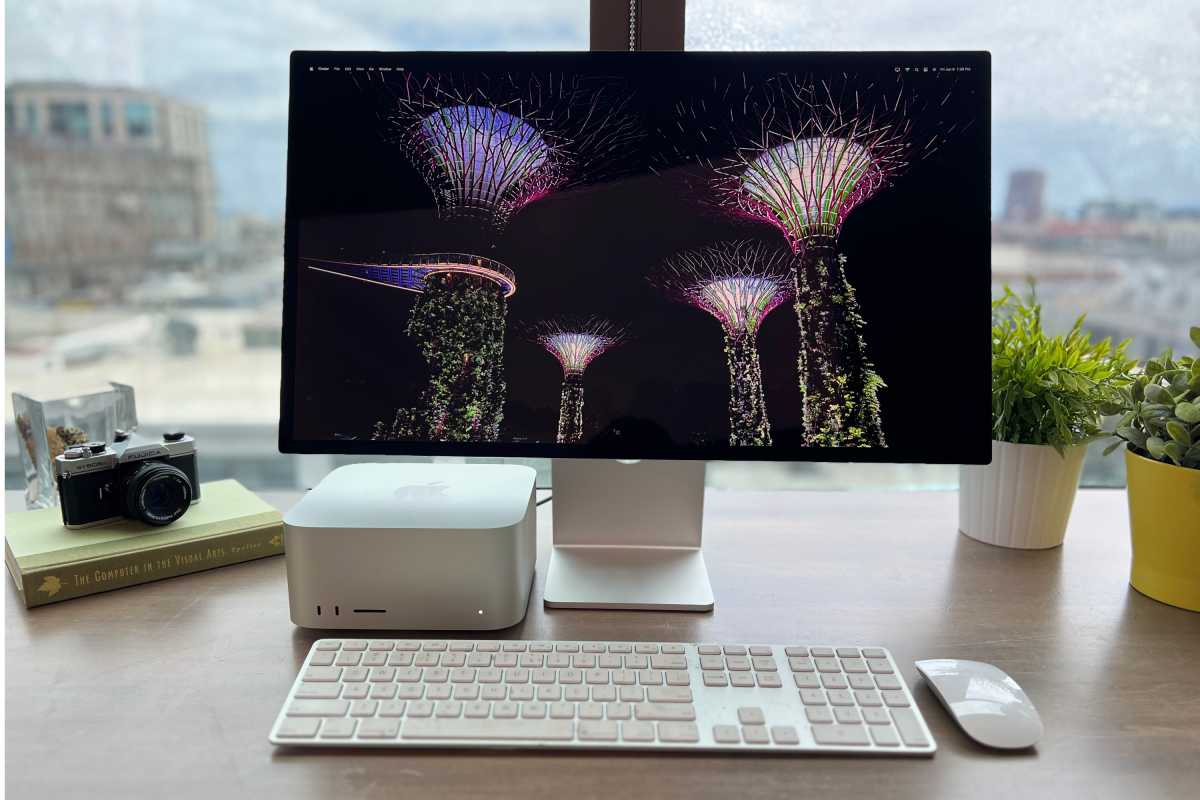
The Mac Studio starts with an M2 Max at $1,999. M2 Ultra models start at $3,499.
Foundry
Still a worthy investment
Thanks to the internet, everyone is a media creator nowadays, whether you’re tending to social media, making your own movies, producing music, shooting and editing photos, creating works of art, or developing software. The Mac Studio is the ideal Mac–it’s powerful, priced appropriately, has lots of ports for connecting devices, and it won’t take up a lot of desk space.
If you bought a Mac Studio last year, there’s little reason to upgrade, unless processing power is a never-ending search for you, or you need to connect more displays than what the 2022 Mac Studio can handle. If you can hold off until later 2024 or early 2025, we could get the M3 Max/Pro by then, and the M3’s new 3nm process promises to take Apple silicon beyond the 25 percent incremental improvement we usually get.
If you’ve been holding off on the Mac Studio all this time, what are you waiting for? The Mac Pro? Well, it’s here, have fun with it! Seriously, if the Mac Studio fits the bill when it first came out but you waited, you could keep waiting for the M3 I just mentioned. Or you can get one now and get some work done faster than ever before.
The Mac Studio starts at $1,999 with an M2 Max–you get a great number of features and power, especially if you compare it to the M2 Pro Mac mini. The Mac Studio with Apple’s most powerful chip, the M2 Ultra, starts at $3,999.

